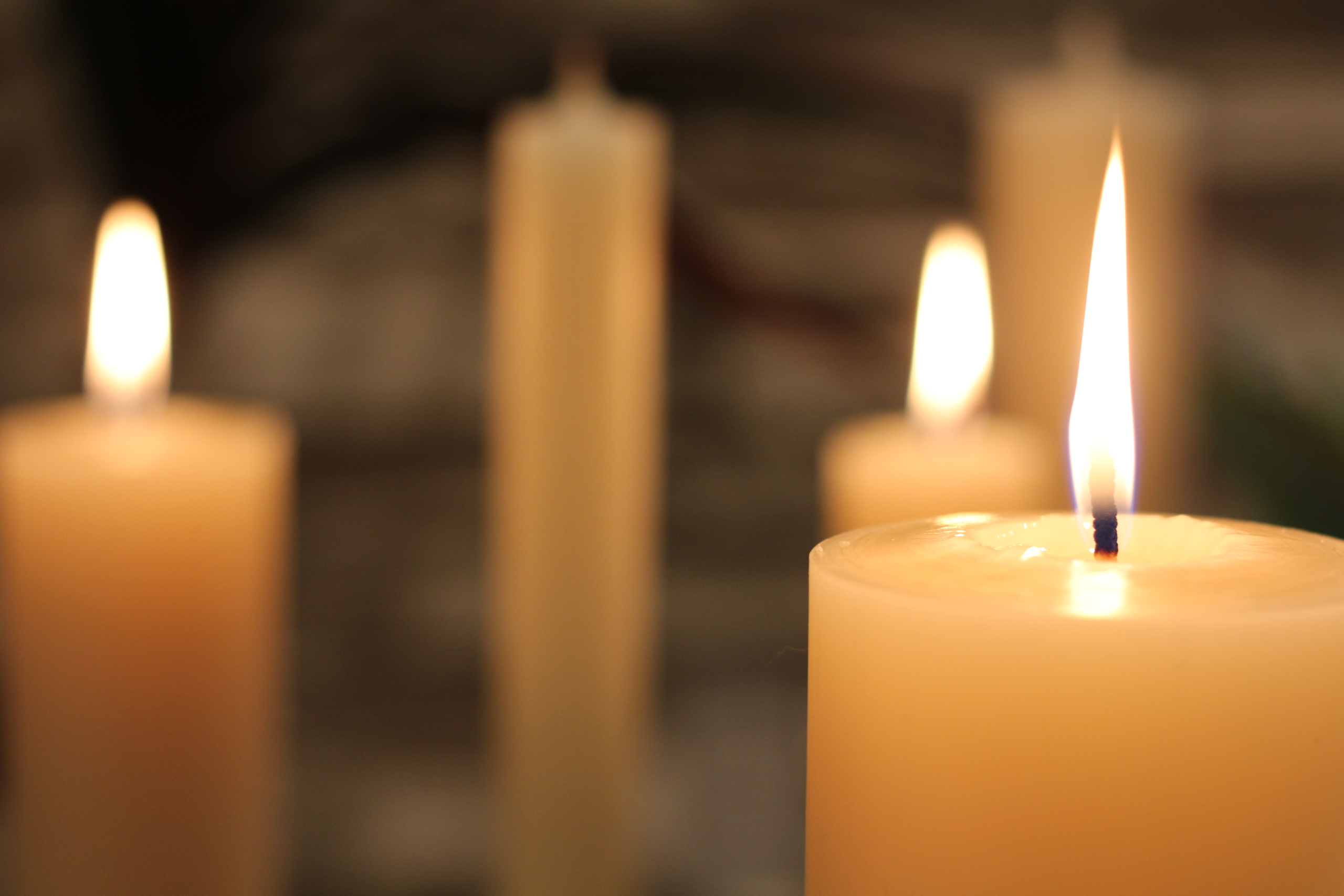Candles
A few simple precautions will ensure the safe use of your candles and provide lasting enjoyment of the wonderful ambiance they create.
Storing Candles
- Heat and light can fade, soften, and distort your candles.
- Always store them in a cool, dark, and dry place.
Using Candles Safely
- To keep candles from smoking, trim wicks to 3/8 inch (10 mm) before each use.
- To keep from dripping, lighted candles should be kept away from drafts.
- A vacillating flame indicates that a candle is not burning properly due to a strong draft or wind.
- When grouping candles together, make sure to leave sufficient space between them so they don’t melt or discolour one another.
- To prevent a “tunnel” from forming in the middle of a pillar candle, let candle burn at least 1 hour for each inch of candle diameter. This will allow the pool of melted wax to reach the top edge of the candle and will increase its burn time.
- Using adhesive wax drops and candle shapers is essential to ensure that your candles fit candle holders properly and securely, and to keep them straight and stable.
- To bring back a shine to your coloured candles, rub them with a soft cloth or nylon stocking.
Safety Precautions
- Never leave a lighted candle unattended.
- Keep all candles out of the reach of children and pets.
- Always burn candles in a proper heat-resistant container or holder, and place them on a heat-resistant surface.
- Keep candles away from flammable materials, objects, or surfaces.
- Remove all packing materials from candles before lighting.
- Use a candle snuffer to safely extinguish candles and before trimming wick.
Bee Wax
Preparation
- Seat candles straight in the candlesticks
- Trim wick to ¾”. (Approximately ¾” of exposed wick is just right for efficient burning of candle).
- If you use a candle burner or follower…
- They must be the same size as candle; eg. 7/8″, etc (Burners recommended for drafty conditions).
- Put on candle and turn slightly so it is snugly seated and straight on.
- Pre-condition wicks by burning two minutes before placing candle on altar.
Lighting
- Avoid hitting candle wick (or burner) with the match or candle lighter.
- Hold the match or candle lighter carefully so that charred pieces of match or wick do not fall into the candle cup. This will avoid a secondary flame which could result in candle failure.
Extinguishing
- Be certain extinguisher or snuffer does not touch wick (or burner).
- Do not “blow” out candle.
- Do not extinguish any candle that has been burning for less than two minutes since the wick may continue to glow or smolder and shorten it so that relighting is difficult.
Care during use
- Too short wicks will be difficult to re-light. Pre-condition as noted in Preparation No.4
- If the candle has a long, curled wick, this condition not only means unduly accelerated burning but may cause the candle to malfunction in some way. (If so, trim wick ¾” long and remove the entire charred portion).
- If the candle burns with a double flame, it may indicate a surplus of wick or burned pieces in the cup at the top of the candle. Start by extinguishing the flame, than remove them at once.
- Do not disturb candles that are performing satisfactorily. The most frequent causes for burning problems are caused when burned portions of wick becomes imbedded in the wax, causing a secondary wick.
- If this occurs, carefully remove burned pieces, remove the darkened area of wax, re-level the top of candle, trim wick to ¾” length, and snugly reseat burner. If all of the charred portion of the wick has been removed, re-condition by lighting for two minutes
- For best results, large diameter candles should burn continuously until the top surface has been liquified to its proper proportion.
For proper performance, candles should burn at least the minimum times shown below:
| Candle size | Approx. Minimum burning time per use |
| 1 ½” dia. candle | 20 minutes |
| 1 ¾” dia. candle | 25 minutes |
| 2″ dia. candle | 30 minutes |
| 2 ¾” dia. candle | 40 minutes |
| 2½” dia. candle | 45 minutes |
Reconditioning
In circumstances where a candle does not remain lit for the required length of time, it has a tendency to burn a hole down throught the centre of the candle body, making re-ligthting difficult.
Under these conditions, the candle should be trimmed and re-conditioned as follows.
- Trim top candles so as to provide flat, level surface, leaving at least ¾” of exposed wick.
- If a burner or follower is used, carefully seat it so that all edges of the top rim of the trimmed candle touch the inner neck section of the burner.
Helpful accessories
- All purpose candle socket… take diameters from ¾” to 2 ½”. No need to change candlesticks. Holds candles perfectly erect. Can be adapted to any existing candlestick
- WILBAUM CANDLE BURNERS… Efficient, functional and streamlined in appearance.


